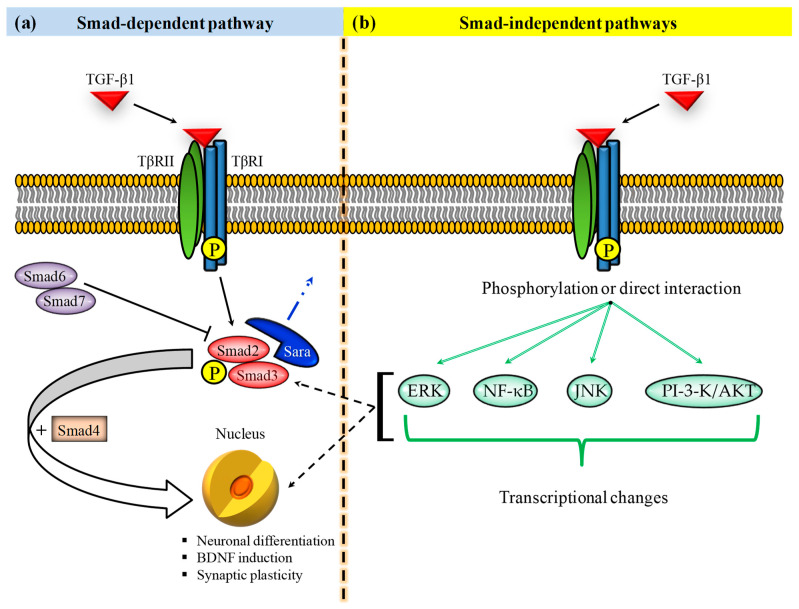Figure 1.
(a) Smad-dependent and (b) Smad-independent TGF-β1 signaling pathways are involved in the regulation of various cellular processes, including cell growth/proliferation, differentiation, cell migration, invasion, and extracellular matrix remodeling. (a) TGF-β1 binds to the TβRII homodimers allowing the dimerization with TβRI homodimers, the activation of the kinase domain of TGF-βRI kinase domain, and the phosphorylation of both SMAD2 and SMAD3. These phosphorylated proteins interact with SMAD4 leading to the formation of a heterotrimeric complex able to translocate into the nucleus with the subsequent activation or repression of different genes involved in neuronal homeostasis. (b) TGF-β1 can also recruit Smad-independent signaling pathways such as ERK, NF-κB, JNK, and PI-3-K/AKT. These non-Smad transducers can mediate signaling responses alone or in combination with Smads, also converging onto Smads to control Smad activities. P indicates phosphorylation. TβRII = TGF-β type II receptor; TβRI = TGF-β type I receptor; BDNF = brain-derived neurotrophic factor; Sara = Smad anchor for receptor activation; NF-κB = nuclear factor kappa-light-chain-enhancer of activated B cells; ERK = extracellular signal-regulated kinase; PI-3-K = phosphatidylinositol-3-kinase; JNK = c-Jun amino terminal kinase.

